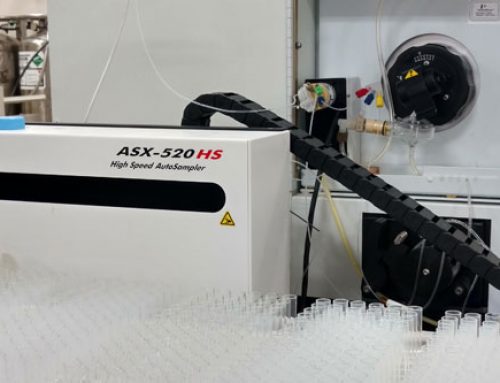Most farmers understand the importance of nitrogen fertilizers in relation to yield, but many do not fully realize the importance of phosphorus fertilizers in maximizing yields and improving fertilizer uptake efficiencies.
Phosphorus fertilizers are the second most important fertilizers for many crops throughout the High Plains. Unlike nitrogen which is a mobile nutrient, phosphate ions move very little in the soil. Many of the soils through the High Plains are well supplied with soil phosphorus, but only about one percent or less of the phosphorus is available for plant uptake without undergoing further conversion to a form that is more readily available. Therefore, it is important to use a soil test to determine the amount of phosphorus that is available to a crop, and then apply the phosphorus fertilizers more effectively to maximize economic crop returns.
Most of the phosphorus fertilizers used today are made from rock phosphate that is treated with acid. It is this acid treatment that makes the phosphorus available for crop usage. It is also important to know that almost all phosphorus fertilizers sold today contain highly water soluble phosphorus. Because of this, it is not as important which phosphorus fertilizer material is selected for application to a field. Liquid fertilizers normally do not have additional availability or agronomic advantages over the dry fertilizers.
Phosphorus fertilizer application and placement have more to do with availability to the plant than the source of phosphorus. There is a process called phosphorus fixation which involves making the phosphorus unavailable to the plants. When fertilizers are applied to the soil, all water soluble phosphorus fertilizers begin to change back to the less soluble soil phosphorus forms that are an inherent part of the soil. The application of commercial fertilizers helps to increase the temporary supply of available phosphorus over time. The degree of fixation is regulated to a large extent by soil pH. Maximum phosphorus availability occurs between a soil pH of 5.5 and 7.2. Below this level, insoluble compounds of iron, aluminum and manganese phosphates are formed. At pH’s above 7.2, calcium phosphates form as less soluble compounds.
To efficiently use phosphorus fertilizers outside the normal pH range, lime should be applied on low pH soils. Also, applications of lessor amounts, more frequently rather than a single large amount of fertilizer is beneficial. In addition, it is advantageous to place the phosphorus fertilizers in zones (such as banding) to reduce the soil to fertilizer contact and to retard the conversion to less soluble phosphorus forms.
Written by: Ron O’Hanlon, Dodge City, KS
Featured Image by: fdecomite, Phosphorus, flicker.com




